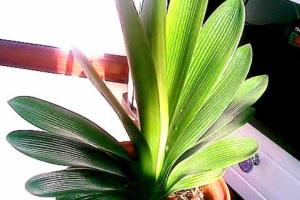How to raise crabapple flowers

How to raise crabapple flowers
Begonia likes sunshine, is not tolerant to shade, has strong adaptability to cold climate, and its drought tolerance is also very strong. Most species are most suitable for growth in highly dry sunny areas, and some species can tolerate a certain degree of saline-alkali soil. Like to grow in loam with deep, fertile and slightly acidic to neutral ph5.5~ph7.0. Begonia has strong tillering ability. Phenological phase varies with latitude, altitude and species.
1. Prune at the right time. Pruning the overdense and thin branches, withered branches and insect pests before sprouting in early spring every year is conducive to ventilation and light, promote growth and flowering, and reduce the occurrence of diseases and insect pests; the old branches should be renewed for old plants, and the top of the small branches should be cut off with sharp saws in the grass spring. After sprouting new branches, a few strong branches will be left, and the weak branches will be cut off, and then they can blossom for another year.
2. Fertilizer and water management. Early spring buds were planted before sprouting, and rotten organic manure was applied before planting. After defoliation, mature organic fertilizer was applied in the rhizosphere after falling leaves every autumn, and the soil was covered with water. Adult plants should not be watered too much, and more water is easy to produce yellow leaves. Generally, water is watered 2-3 times in spring, 1-2 times in summer and autumn, and 1 time in winter.
3. Pick the fruit in time. After the flower fade, the young fruit should be picked in time to save nutrients and help to increase the number of flowers in the coming year.
4. Disease and pest control. Begonia is vulnerable to aphids, red spiders, shell insects, longicorn beetles and other pests, so it needs timely spraying and control.
5. Watering and fertilizing. It is appropriate to keep the basin soil moist for watering. Drought and midsummer weather also need to spray water on the leaf surface and the ground, and increasing air humidity is beneficial to growth. Avoid stagnant water in the basin and get caught in the rain, otherwise the roots are easy to rot. In winter, the basin soil is slightly dry, spraying leaves and environment with clean water every 7 days, which not only increases humidity but also makes leaves clean. During the growth period, thin cake fertilizer and water were applied once every 10 days, and quick-acting phosphate fertilizer was applied in the bud stage. Pay attention to fertilization, do not splash fertilizer on the leaves; flowering and winter and summer should not be fertilized.
6. Light and temperature. The suitable temperature for the growth of bamboo begonia is 18-20 ℃, and it has a well-ventilated and scattered light environment. Measures such as shading, ventilation and water spraying should be taken in high temperature season, and it is better to keep room temperature above 10 ℃ in winter, which can be placed in a place with plenty of sunshine. During the growing season, the family should be exposed to outdoor scattered light once or twice a week, and should be placed in a sunny shelter in winter.
7. Lashing and turning the basin. As the bamboo crabapple plant is relatively tall, it is necessary to use thin bamboo and other things to set up support branches to prevent lodging. At the same time, every spring, we need to turn the basin, change the soil, prune and cut off the weak branches, overlapping branches and residual roots. For the plants that have flowered for 2-3 years, the plants that are too high should be truncated, leaving only 6-10 cm of the stem to germinate new branches.
Related
- Wuhan Hospital Iron Tree Blooming Result Was Instantly Frightened by the Gardener Master
- Which variety of camellia is the most fragrant and best? Which one do you like best?
- What is the small blue coat, the breeding methods and matters needing attention of the succulent plant
- Dormancy time and maintenance management of succulent plants during dormancy
- Minas succulent how to raise, Minas succulent plant pictures
- What are the varieties of winter succulent plants
- How to raise succulent plants in twelve rolls? let's take a look at some experience of breeding twelve rolls.
- Attention should be paid to water control for succulent plants during dormant period (winter and summer)
- Watering experience of twelve rolls of succulent plants
- Techniques for fertilizing succulent plants. An article will let you know how to fertilize succulent plants.



